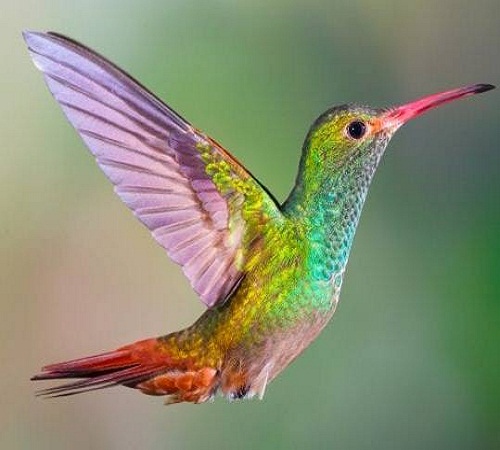An international team of researchers have found that the hummingbirds’ colour comes from pancake-shaped structures within the birds’ feathers.
Hummingbirds’ distinctly coloured iridescent feathers result in the bird’s colour seemingly changing at different angles. A new study published in Evolution shows that, while hummingbird feathers have the same basic makeup as other birds’, the shape of their pigment containing structures enable them to reflect a rainbow of light.
“The big question that keeps me up at night is, why are some groups of birds more colourful than others?” says Chad Eliason, the paper’s first author and a postdoctoral researcher at the Field Museum in Chicago.
“You can look out your window and see drab brown birds, and then you have this glittering gem flutter to your hummingbird feeder. Why are hummingbirds so colourful? Is it the environment, is it sexual selection? Or is it something about the internal mechanisms, the physics and the way colours are produced?” continued Eliason.
Eliason and his team of international scientist conducted the largest ever optical study of hummingbird feathers. The team examined the feathers of 35 species of hummingbirds using transmission electron microscopes and compared them with the feathers of other brightly coloured birds, such as the green-headed mallard.
All of birds’ feathers are made from keratin, the same material that makes up human hair and nails. Structured like trees, birds’ feathers have parts resembling a trunk, branches and leaves. Called feather barbules, the ‘leaves’ are made up of cells that contain pigment producing organelles called melanosomes. When in humans, melanosomes produce the melanin pigment found in the skin and hair. The shape and arrangement of these melanosomes can influence the way light bounces off them, producing bright colours.
“We call these iridescent colours ‘structural colours’ because they depend on the structural dimensions,” says co-author Matthew Shawkey of Belgium’s University of Ghent.
Shawkey continued: “A good analogy would be like a soap bubble. If you just look at a little bit of soap, it’s going to be colourless. But if you structure it the right way, if you spread it out really thin to form the shell of a bubble, you get those shimmering rainbow colours around the edges. It works the same way with melanosomes: with the right structure, you can turn something colourless into something really colourful.”
Source: scitecheuropa










